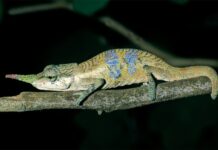A 12,000-year-old clay figurine discovered in northern Israel offers an unprecedented glimpse into the symbolic world of early human settlements. The artifact, depicting a woman and a goose in what appears to be a ritualistic or mythological scene, is the earliest known depiction of human-animal interaction and the first naturalistic representation of a woman found in Southwest Asia.
The Discovery at Nahal Ein Gev II
Archaeologists led by Dr. Laurent Davin unearthed the figurine at the Late Natufian site of Nahal Ein Gev II (NEG II), a settlement overlooking the Sea of Galilee. The Natufian culture, spanning roughly 15,000 to 11,500 years ago, marks a crucial transition in human history – the shift from nomadic foraging to settled communities. This discovery suggests that long before the advent of agriculture, early villagers were already experimenting with narrative art, symbolic expression, and clay modeling techniques.
The Figurine: Craftsmanship and Symbolism
The figurine, just 3.7 cm tall, was meticulously crafted from local clay and fired at approximately 400°C, indicating deliberate control of early pyrotechnology. Microscopic and chemical analyses revealed traces of red pigment (ocher) on both the woman and the goose, alongside a preserved fingerprint likely left by the artisan – a young adult or adult female.
The sculptor employed light and shadow to create depth and perspective, foreshadowing artistic innovations that would not fully flourish until the Neolithic period. The scene itself depicts a woman crouched beneath a goose perched on her back. The goose, a common food source during the Natufian period, appears alive rather than hunted, suggesting a deeper symbolic meaning.
Context and Interpretation
Researchers interpret the composition as an imagined or mythological encounter, consistent with animistic beliefs – a worldview that saw humans and animals as spiritually interconnected. Faunal remains from the site reinforce this connection, as goose feathers were used for decoration and bones were fashioned into ornaments. The artistic focus on a goose and a woman suggests an early mythic imagination, a symbolic vocabulary that later blossomed in Neolithic cults and figurative traditions across Southwest Asia.
A Transformative Moment in Human Culture
“This discovery is extraordinary on multiple levels,” says Dr. Laurent Davin, the lead author of the study. “Not only is this the world’s earliest figurine depicting human-animal interaction, but it’s also the earliest naturalistic representation of a woman found in Southwest Asia.”
Prof. Leore Grosman adds, “The NEG II figurine captures a transformative moment. It bridges the world of mobile hunter-gatherers and that of the first settled communities, showing how imagination and symbolic thinking began to shape human culture.”
This artifact embodies the earliest seeds of myth, storytelling, and spiritual connection, articulated in clay by hands that lived millennia before the rise of civilization. The figurine offers a rare window into the beliefs and artistic expression of early humans, highlighting the deep connection between humans, animals, and the natural world that existed long before the advent of agriculture and settled life




































